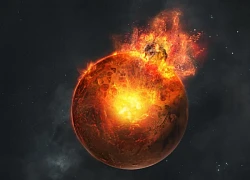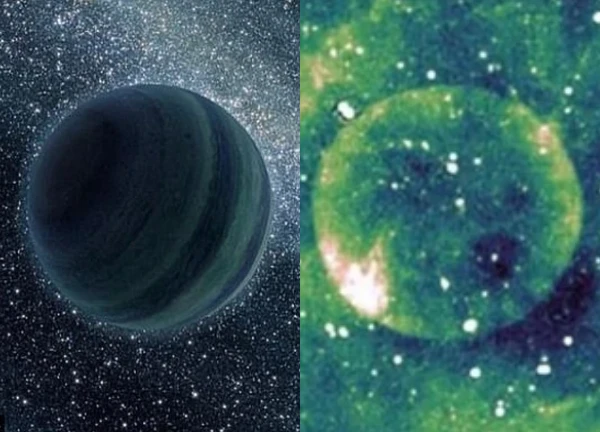The 'secret' of Qin Shi Huang's grave was 'announced', the truth 'shocked' the whole world

2 | 0 Discuss | Share
On October 9, the National Weather Service ( NWS ) officially announced the reappearance of the La Niña weather pattern. This announcement comes with the opinion that this phenomenon will have a weaker effect than the previous ones.
The scientific nature of La Niña
La Niña (meaning "Little Girl" in Spanish) is a natural cold phase in the El Niño–Southern Oscillation (ENSO) cycle, a large climate system that governs weather across the planet.
In essence, La Niña is characterized by an abnormal cooling of ocean surface temperature (SST). This cooling is concentrated mainly in the central and eastern regions of the equatorial belt over the Pacific Ocean. This phenomenon occurs when trade winds, which blow east-west along the equator, become stronger than usual. Strong winds push warmer ocean water on the surface to the west (near Asia and Australia), allowing colder water to emerge from deep under the ocean (upwelling) in the Eastern Pacific Ocean (near South America). It is this increase in water that forms La Niña's core cooling characteristic.
This change in ocean surface temperature (SST) leads to major disturbances in the Walker atmospheric circulation, a large-scale wind cycle over the equator. This change, especially the phenomenon of vertical wind breaks (changes in the speed and direction of the wind overhead), is a direct cause of global weather impacts.
Global and Regional Impact
Due to changes in wind structure and atmospheric pressure, La Niña causes extreme weather patterns around the world: Hurricane activity: La Niña tends to increase hurricane activity in the Atlantic basin and, conversely, decreases the number and intensity of hurricanes in the Pacific basin. Changes in wind breaks help facilitate conditions than for Atlantic hurricanes to thrive. Rain and Drought: Often brings unusually high rainfall and flood risk in some areas such as Southeast Asia, Australia, and southern Africa. In contrast, it causes severe droughts in other regions, including the Southern United States, Mexico, and parts of South America. This situation has been noted during the recent prolonged event.
Current Cycle and Forecast (2025-2026)
According to the NWS, La Niña weakened for a short period from December 2024 to March 2025, when climate-neutral conditions prevailed. However, this phenomenon has returned from September 2025. A clear indication is the below-average spread of SST throughout the central and eastern equatorial region over the Pacific Ocean.
Detailed forecast: La Niña is expected to last throughout the winter. There is a high 55% chance that this phenomenon will return to a neutral state between January and March 2026. The NWS specifically noted that the predicted weakening this time around "will be less likely to have the usual winter impacts." This implies that familiar winter weather impacts such as colder temperatures or increased snowfall may not be as strong as expected.
Record La Niña and Global Warming
The period 2020-2023 saw an unusually long La Niña event, known as a "triple-dip La Niña" event. This is the first time this phenomenon has occurred in the 21st century and only the third time since 1950. This prolonged situation has increased both droughts and floods in various parts of the world, proving its powerful impact.
The worrying thing is that, although La Niña is a natural planetary cooling factor, it has not been able to stop a string of record-breaking hot years. In fact, the 10 hottest years ever recorded have all been in the past decade.
The NWS also confirmed that, even after warm El Niño conditions weakened last year, global temperatures remained at record highs or near-records. This leads to the conclusion that 2024 is the hottest year on record. This fact suggests that the effects of global warming caused by human activity are overtaking the natural cycle of ENSO. The return of La Niña, while weaker, still takes place in an already significantly warmed climate, which can lead to more unpredictable weather responses and impacts.
NASA spacecraft sends final warning before "dying": Earth is on the verge of destruction?  An Huy16:08:54 30/08/2025Analyzing the legacy of NASA's InSight spacecraft, scientists have found evidence of a catastrophic event in the past. The event involved a fateful collision between Earth and a hypothetical planet, which accidentally broke off part of Mars' crust.
An Huy16:08:54 30/08/2025Analyzing the legacy of NASA's InSight spacecraft, scientists have found evidence of a catastrophic event in the past. The event involved a fateful collision between Earth and a hypothetical planet, which accidentally broke off part of Mars' crust.

2 | 0 Discuss | Share

4 | 0 Discuss | Share

3 | 0 Discuss | Share

1 | 0 Discuss | Share

3 | 0 Discuss | Share

2 | 0 Discuss | Share

4 | 0 Discuss | Share

4 | 0 Discuss | Share

1 | 0 Discuss | Share

1 | 0 Discuss | Share

3 | 0 Discuss | Share

3 | 0 Discuss | Share







4 | 0 Discuss | Report